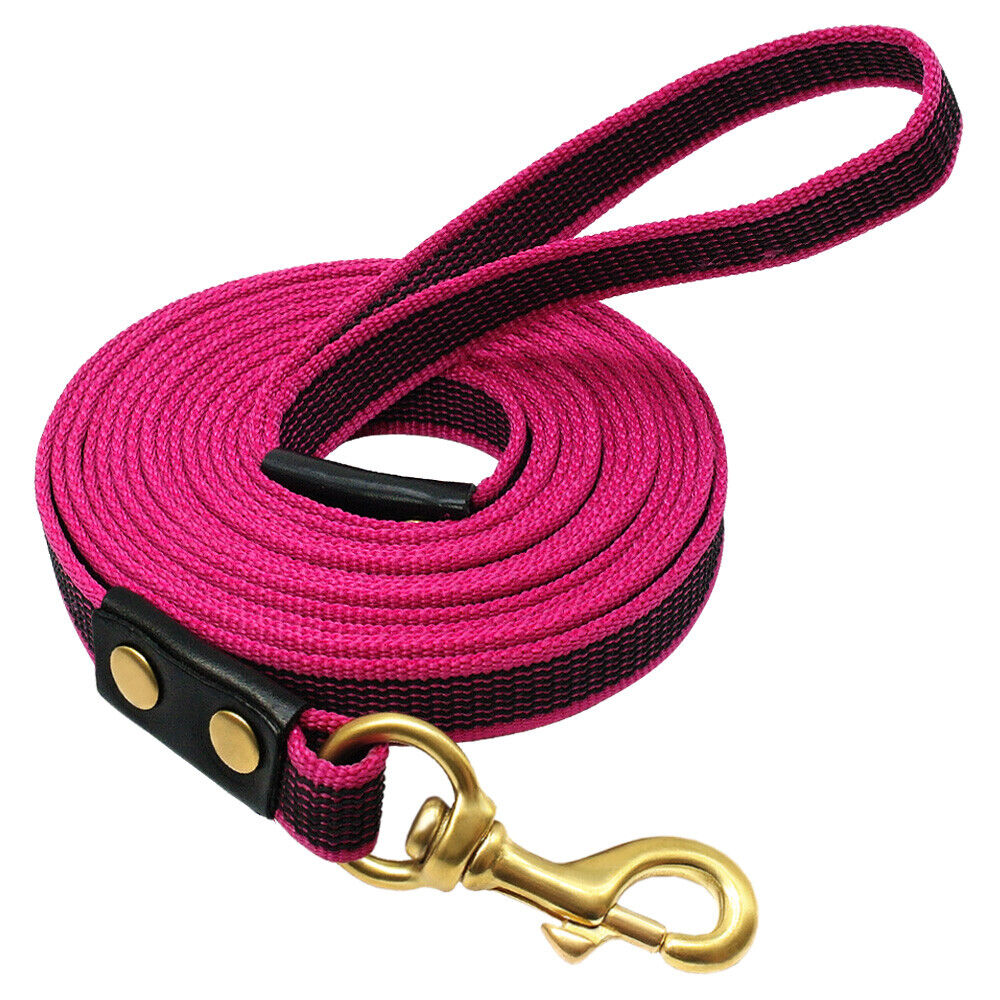What is a long lead?
A long lead is a long version of a dog’s normal fixed lead. Some of the fabrics they are made out of allow you to tie loops in them creating a lead that allows you to give your dog multiple lengths of freedom.

When using a long lead it is advised that you always attach it to a harness not your dog’s collar. This will help to protect their throat if they decide to run to the end of the lead at a high speed.
How long leads can help with you and your dog
Long leads or leashes are beneficial for dog training for several reasons. These leads provide dog owners with greater control over the dog’s behavior, allowing trainers to guide and redirect the dog’s actions more effectively. Additionally, long leads offer dog owners a sense of safety and control when training outdoors or in unfamiliar environments. Some examples of when you can use a long lead are:
1. Walking: Long leads allow dog owners to maintain control over the dog while walking in busy areas or in areas with high distractions, such as parks or crowded streets. By extending the length of the lead, trainers can provide additional guidance and control, preventing the dog from pulling or lunging at passersby or other animals.
2. Training exercises: Long leads are essential for training exercises that involve distance control or recall. Trainers can use them to gradually increase the distance between the dog and the handler, allowing the dog to practise obedience cues such as sit, stay, or heel. Additionally, long leads can be used to help train recall commands, allowing trainers to gradually increase the distance the dog is allowed to roam before being called back.
3. Behaviour modification: Long leads can be a valuable tool for behaviour modification, particularly for dogs with excessive barking, jumping, or other behaviour issues. By extending the length of the lead, trainers can redirect the dog’s attention away from the trigger, providing them an opportunity to practise alternative behaviours and get positively rewarded for it.

4. Socialisation: Long leads can be useful for socialising dogs with other dogs or unfamiliar people. By extending the lead, trainers can create a safe distance between the dog and other dogs or individuals, allowing the dog to observe and adjust to new situations in a controlled manner.
5. Building your confidence: Long Leads are a great way to build your confidence around your dogs behaviour. You can create different lengths to help with training but also have it there as a safety net for when you are first letting your dog free “off lead” or looking at where they are at with their impulse control.
In conclusion, long leads are valuable tools for dog training. They provide dog owners with greater control over the dog’s behaviour, allow trainers to guide and redirect the dog effectively, and are useful for various training exercises. By utilising long leads appropriately, dog owners can enhance their dog’s training and overall behaviour.
